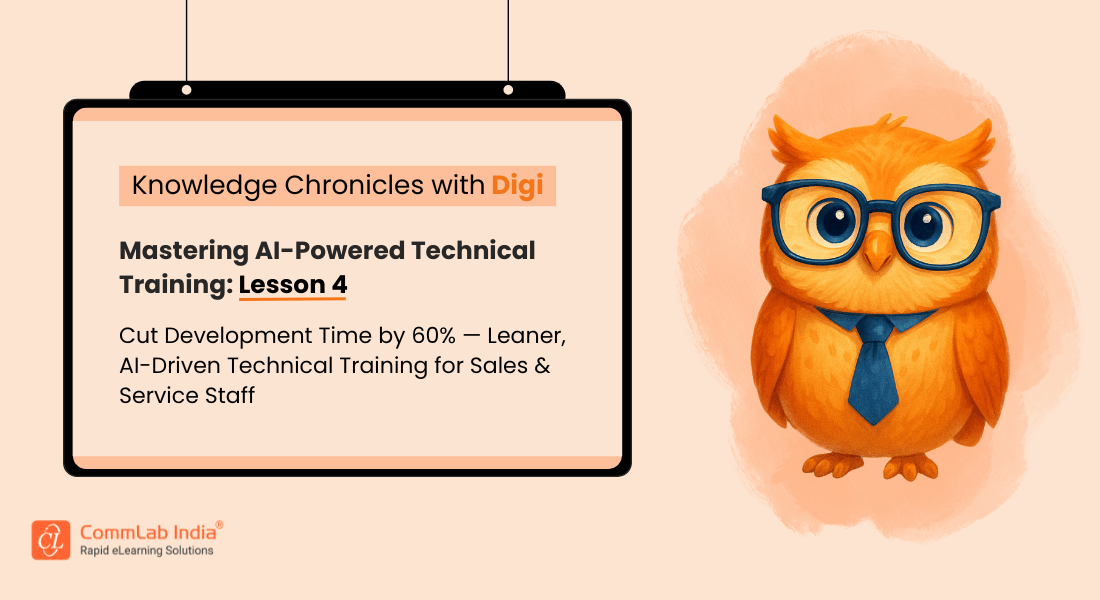How to Harness Microlearning for New Product Feature Adoption in Enterprises

Product innovation is the lifeblood of successful enterprises. However, when new features are rolled out, the challenge of getting employees and users fully up to speed can hinder the intended benefits. Traditional training methods often fail to create lasting adoption, leaving those new features underutilized while potentially compromising productivity. Microlearning offers a compelling solution. By focusing on bite-sized, targeted learning modules, microlearning can dramatically streamline feature adoption, leading to better user experiences and faster returns on investment in product development.
Do You Want New Product Feature Adoption to be Seamless? Try Microlearning!
Here’s how you implement it -
- Identify Target Features
- Break Down Feature Components
- Select Optimal Formats
- Create a Learning Journey
- Integration and Accessibility
Common Hurdles to New Feature Adoption
Let's first examine the common roadblocks enterprises typically encounter when introducing new product features:
- Complexity: Modern enterprise software can be incredibly complex. New features often add additional layers to this complexity, leading to confusion and frustration among users.
- Time Constraints: Employees are often swamped with their primary duties. Lengthy product training sessions for every new feature rollout can be disruptive and difficult to fit into busy schedules.
- Information Overload: Traditional training methods can bombard users with extensive information. This can lead to cognitive overload and make it harder to retain the most crucial details about new features.
- Pricing: Sometimes users resist new features or change due to perceived costs. This might stem from fear that the learning curve will be too steep, requiring too many hours or affecting existing productivity.
- Usability: Even the most well-intentioned features can suffer from poor usability design. If the feature is difficult to navigate or integrate into workflows, users are less likely to adopt it.
→ Download Infographic Now: Microlearning to Skyrocket Your Corporate Training Initiatives
Why Microlearning for Product Feature Adoption?
Microlearning addresses these challenges head-on:
- Focus: Microlearning modules laser-focus on a single aspect of a new feature. This eliminates the overwhelm associated with comprehensive training and makes it easier for users to digest and apply the information.
- Accessibility: Microlearning content is designed to be consumed in short bursts, often lasting only a few minutes. This allows users to learn on the go, during breaks, or whenever they have a few spare minutes.
- Engagement: Interactive microlearning formats, such as videos, simulations, and quizzes, keep learners engaged and make the learning process more enjoyable. You can also use digital adoption platforms to ease your design process. Here are a few features of digital adoption platforms.

- Reinforcement: Microlearning allows for spaced repetition. Key concepts can be revisited at strategic intervals, promoting long-term retention and understanding.
- Cost-effective: Microlearning creation leverages smaller chunks of content, making it more adaptable to updates and often less costly to produce than expansive training programs.
How to Implement Microlearning for New Feature Adoption
Here's a step-by-step approach to implementing microlearning for successful new product feature adoption:
- Identify Target Features: Prioritize those new features that offer the most value to the organization, or that address significant pain points. Don't try to tackle the rollout of every new feature simultaneously.
- Break Down Feature Components: Analyze each feature and break it down into its smallest, teachable components. For instance, a new data analytics feature could be divided into modules on creating custom reports, setting up dashboards, and interpreting visualizations.
- Select Optimal Formats: Consider your audience and the feature's complexity when deciding on microlearning formats:

- Create a Learning Journey: Design a sequence of microlearning modules that guides users through adopting the feature. Consider a gradual approach, introducing core concepts first and building complexity over time.
- Integration and Accessibility: Make the microlearning content easily discoverable within the product itself or through your company's intranet or knowledge base. A seamless experience facilitates in-the-moment learning.
Additional Tips for Successful Implementation
- Gamification: Make learning fun and competitive by adding gamification elements such as points, badges, and leaderboards. This can incentivize users to engage with the microlearning content.
- Feedback Loops: Collect feedback from users on their experience with the microlearning modules. Use this feedback to continuously iterate and improve the content and delivery.
- On-Demand Support: Supplement microlearning with easily accessible support resources such as knowledge base articles or chatbot assistance. This ensures users can find immediate help if they encounter difficulties.
- Celebrate Success: Recognize and reward employees who have successfully adopted new features. This can create a sense of accomplishment and inspire wider adoption.
Measuring the Success of Microlearning
To gauge the effectiveness of your microlearning strategy, track these metrics:
- Completion Rates: Monitor how many users engage with and complete the microlearning modules.
- Feature Usage: Analyze data on the adoption and proficient use of the new features after microlearning implementation.
- Knowledge Assessments: Use pre- and post-training quizzes or surveys to measure changes in understanding of the new features.
- Feedback: Encourage qualitative feedback to gain insights into the perceived value and usability of the microlearning content.
Wrapping Up!
In today's fast-paced enterprise environment, microlearning offers a powerful solution for streamlining the adoption of new product features. By breaking down learning into digestible chunks, providing on-demand access, and prioritizing engagement, microlearning can empower employees to quickly master new functionalities. As a result, organizations can realize the full value of their technology investments and foster a culture of continuous learning and innovation. Here’s a bonus infographic that mentions how to leverage it for macro results.


![Microlearning — How to Leverage it for Macro Results [Infographic]](https://no-cache.hubspot.com/cta/default/59327/16407642-6662-4ba8-882c-72f2b0b9f493.png)


